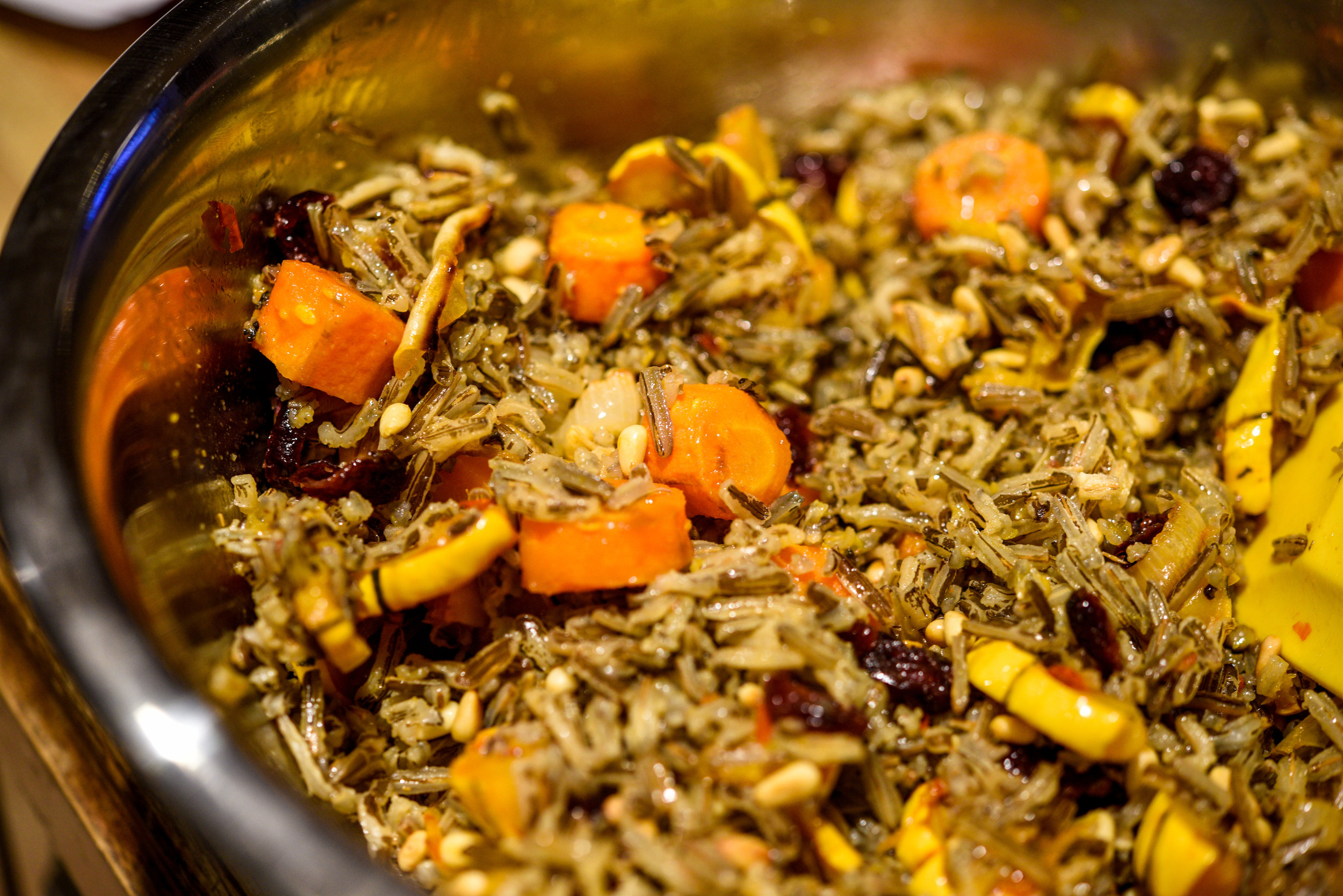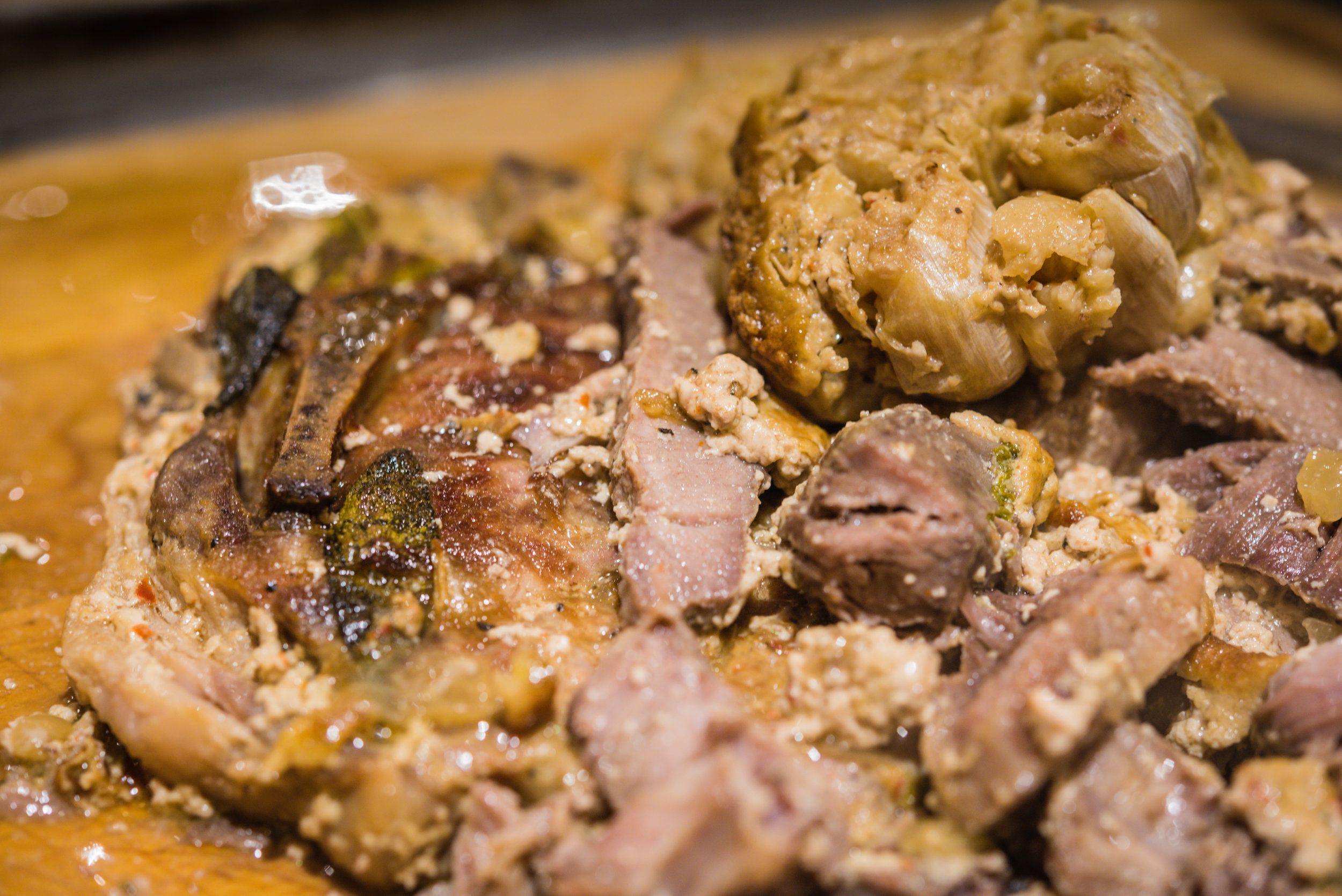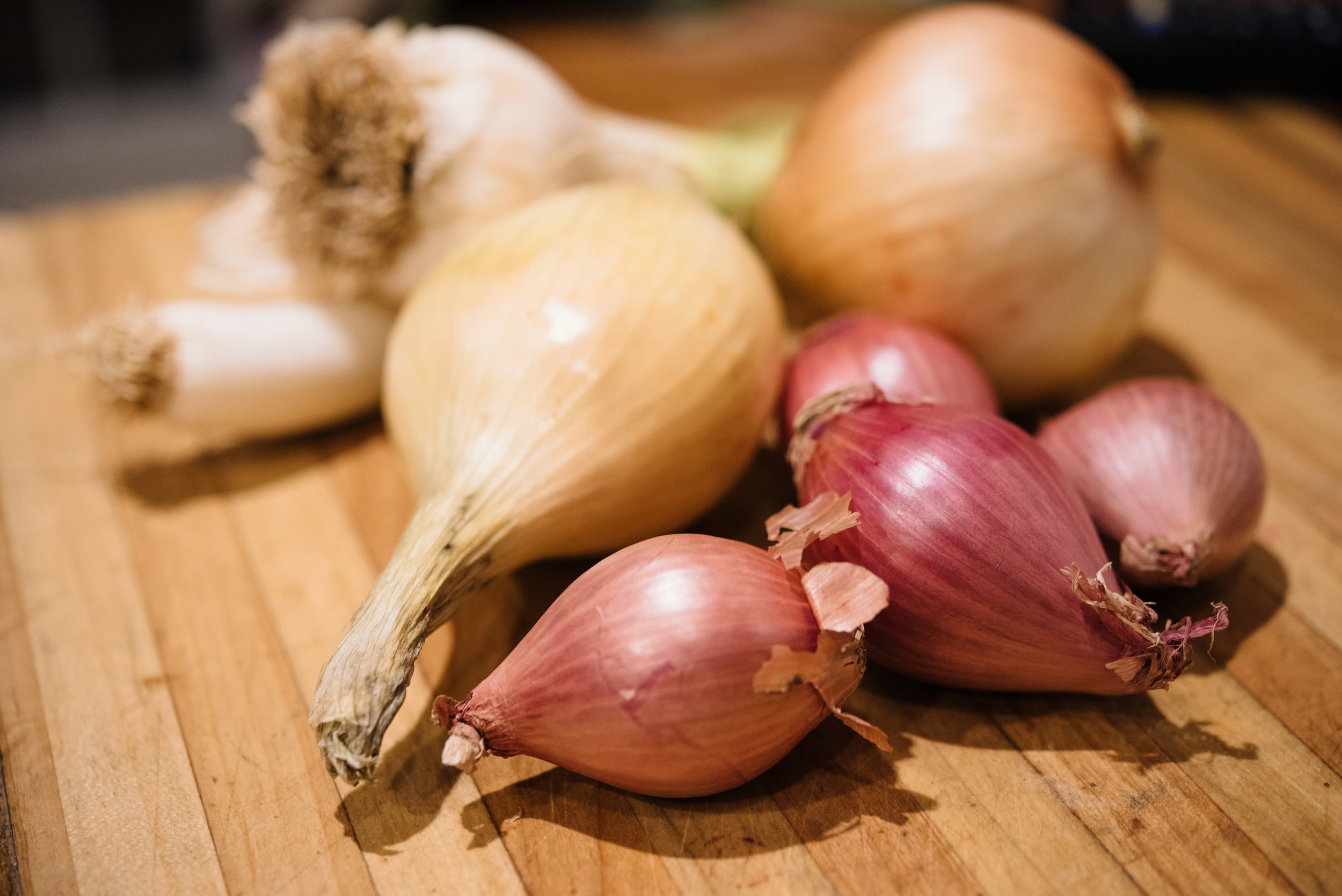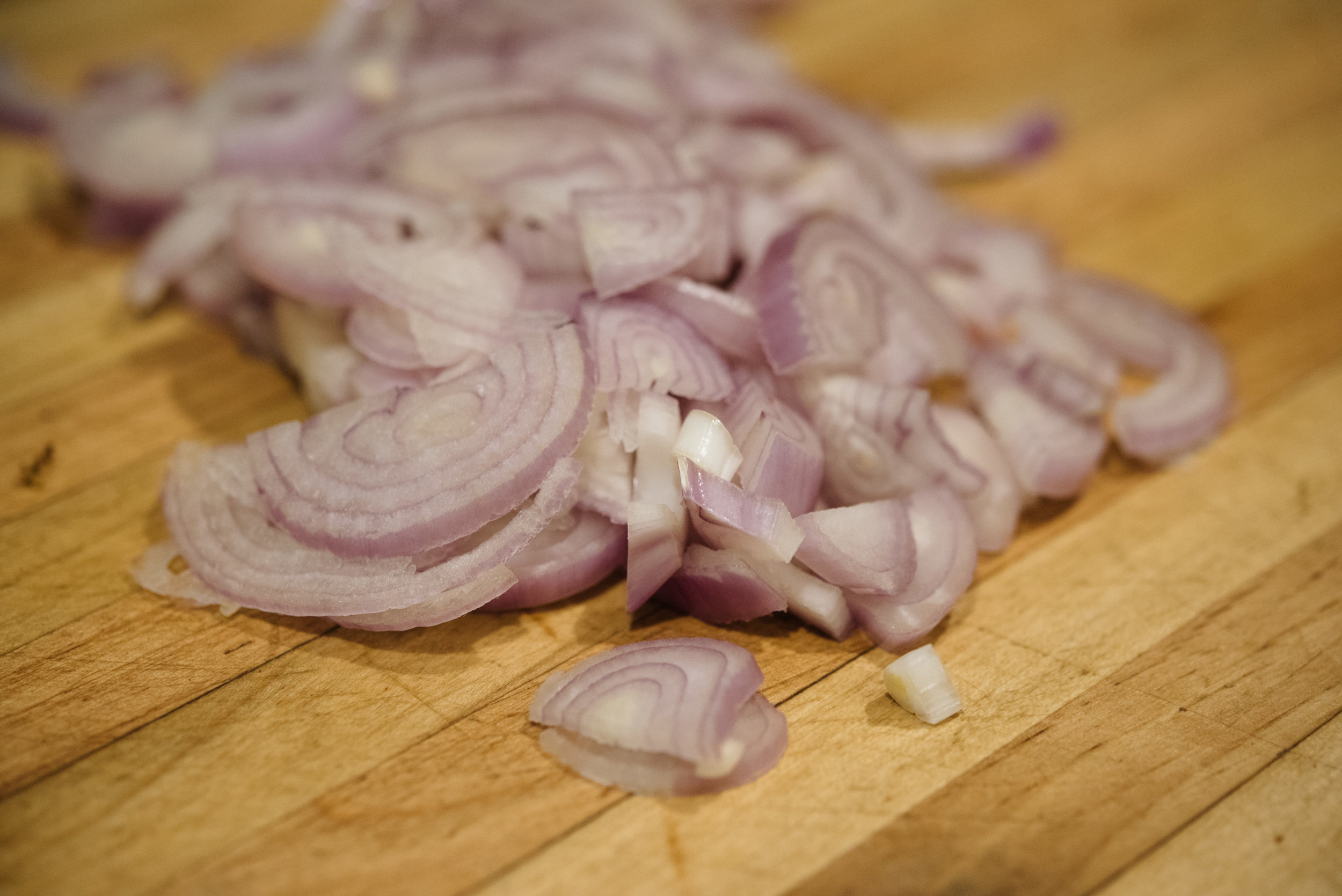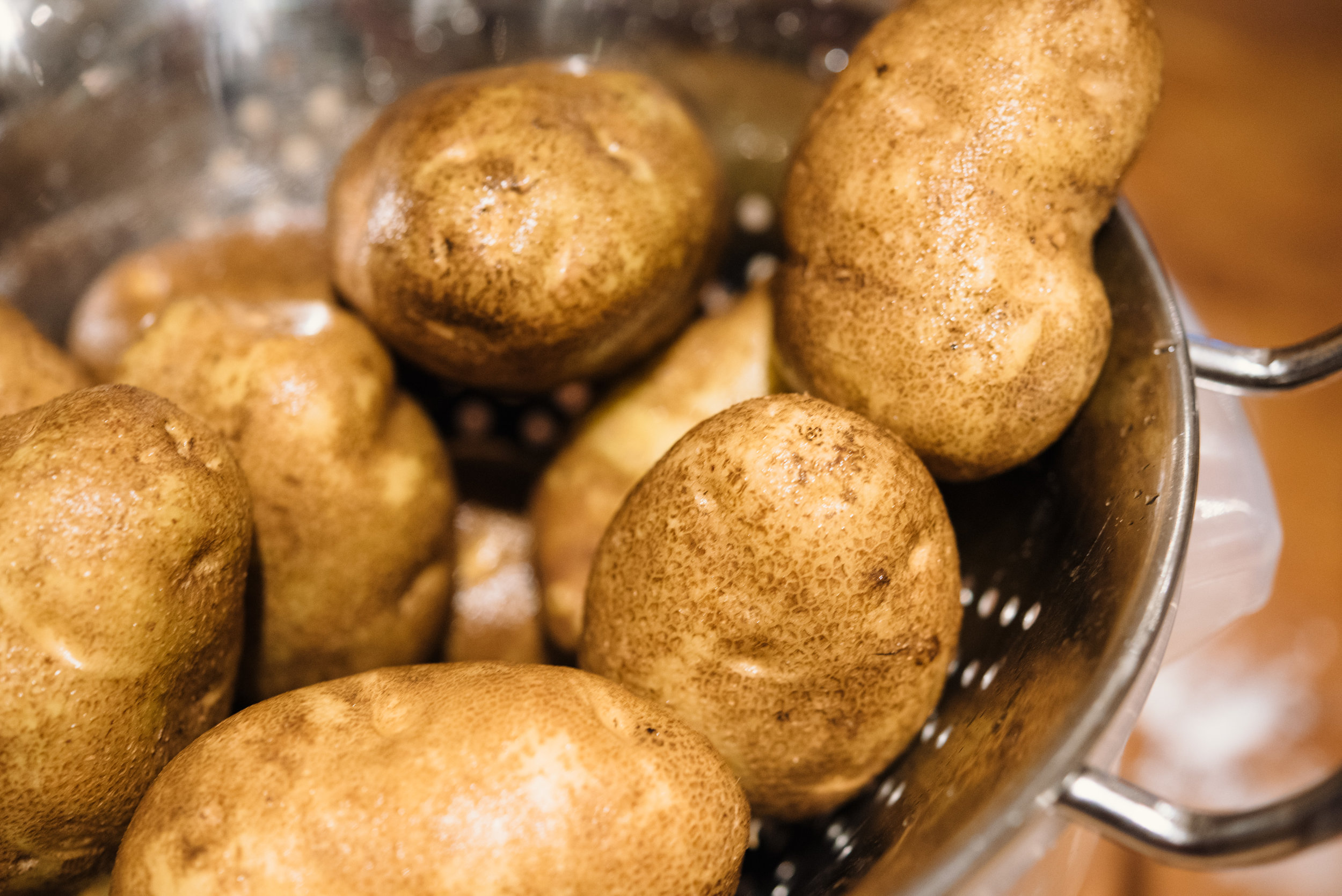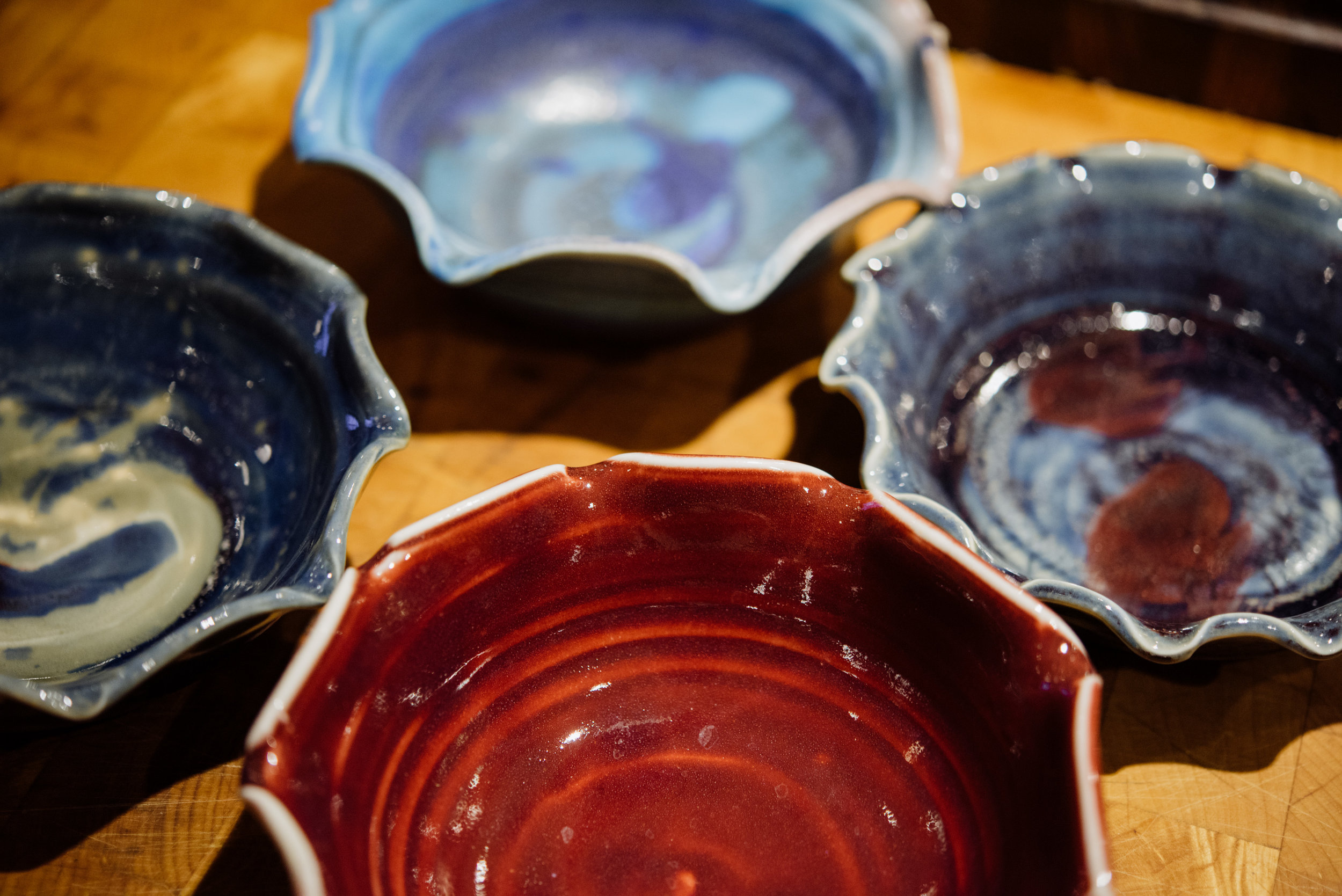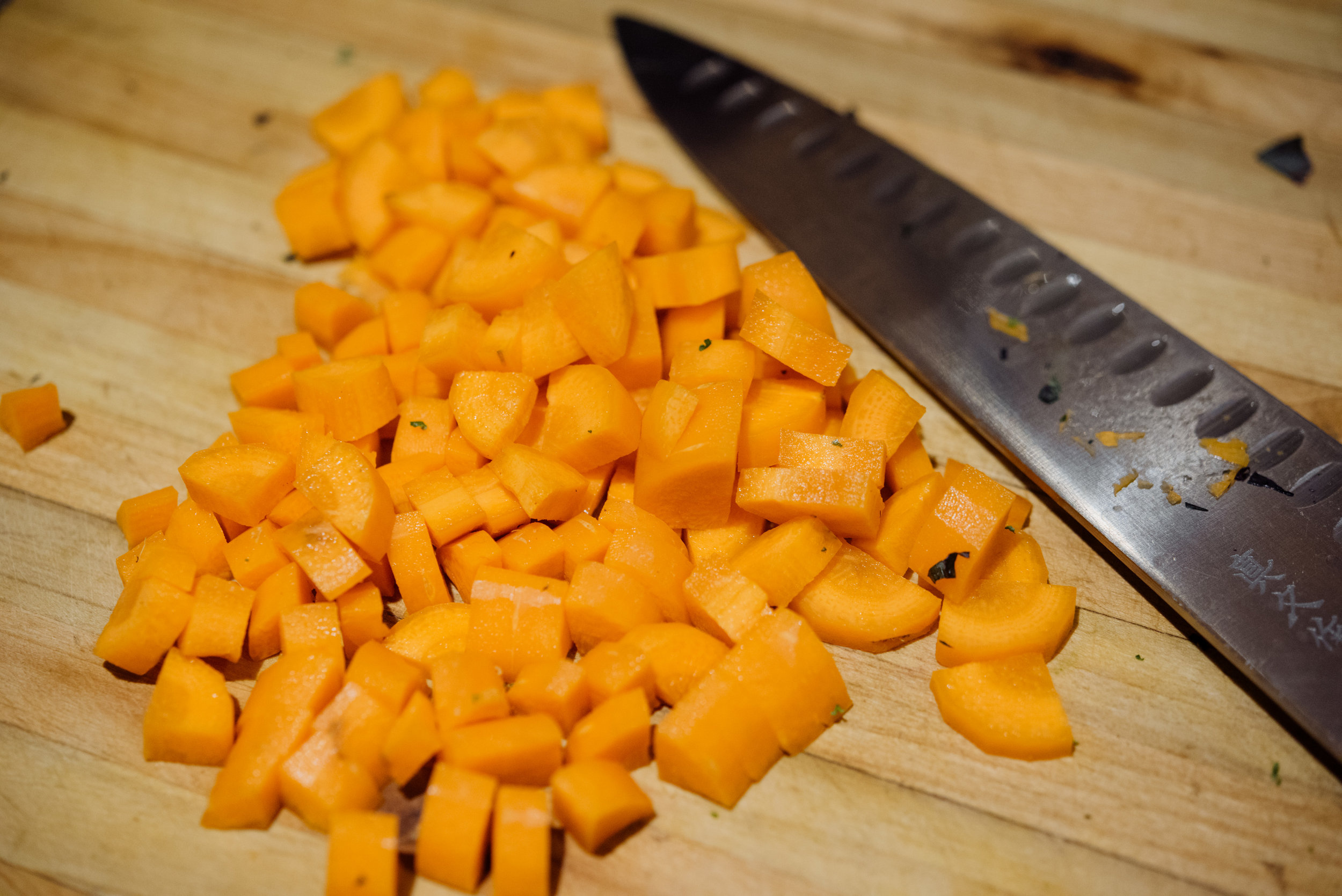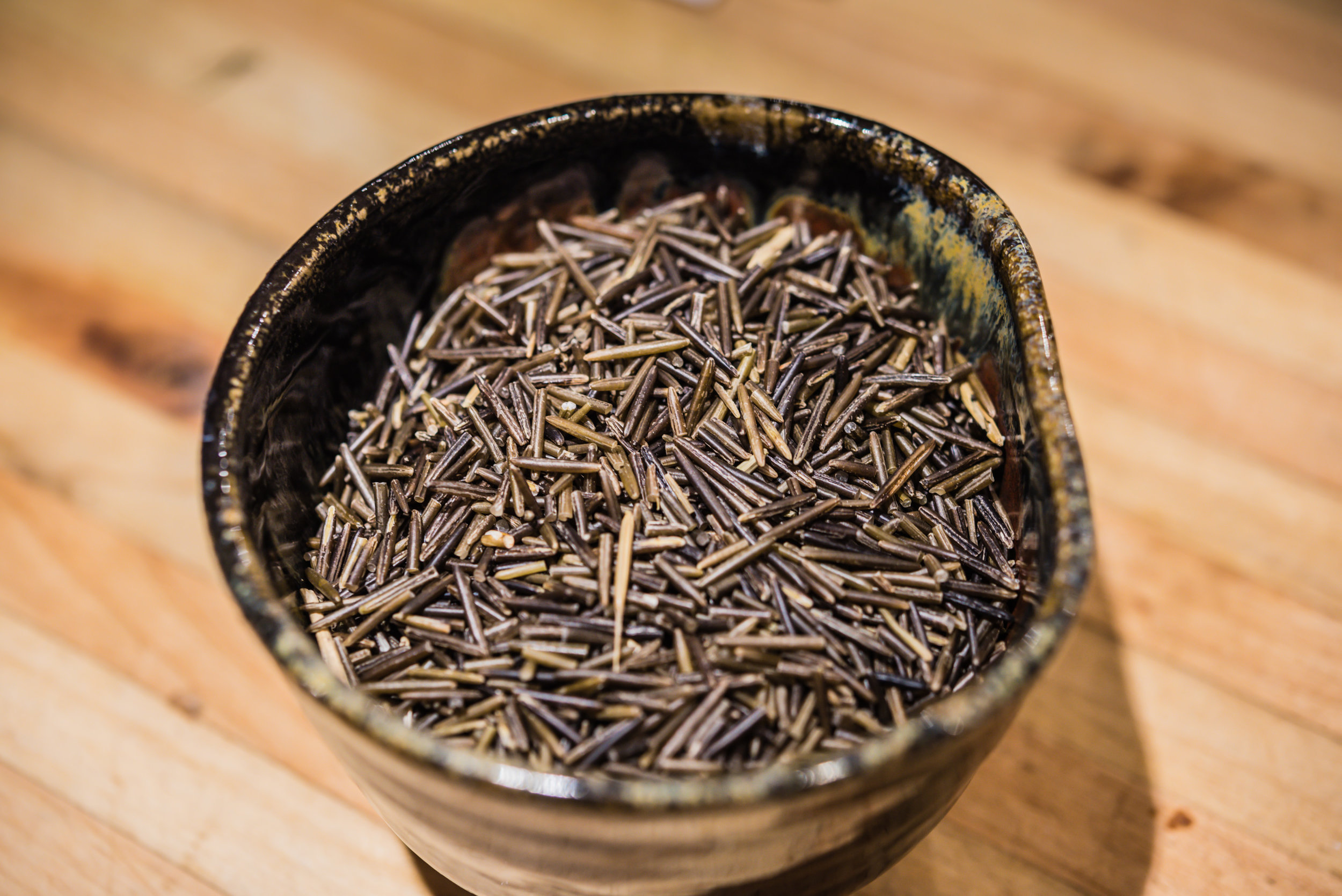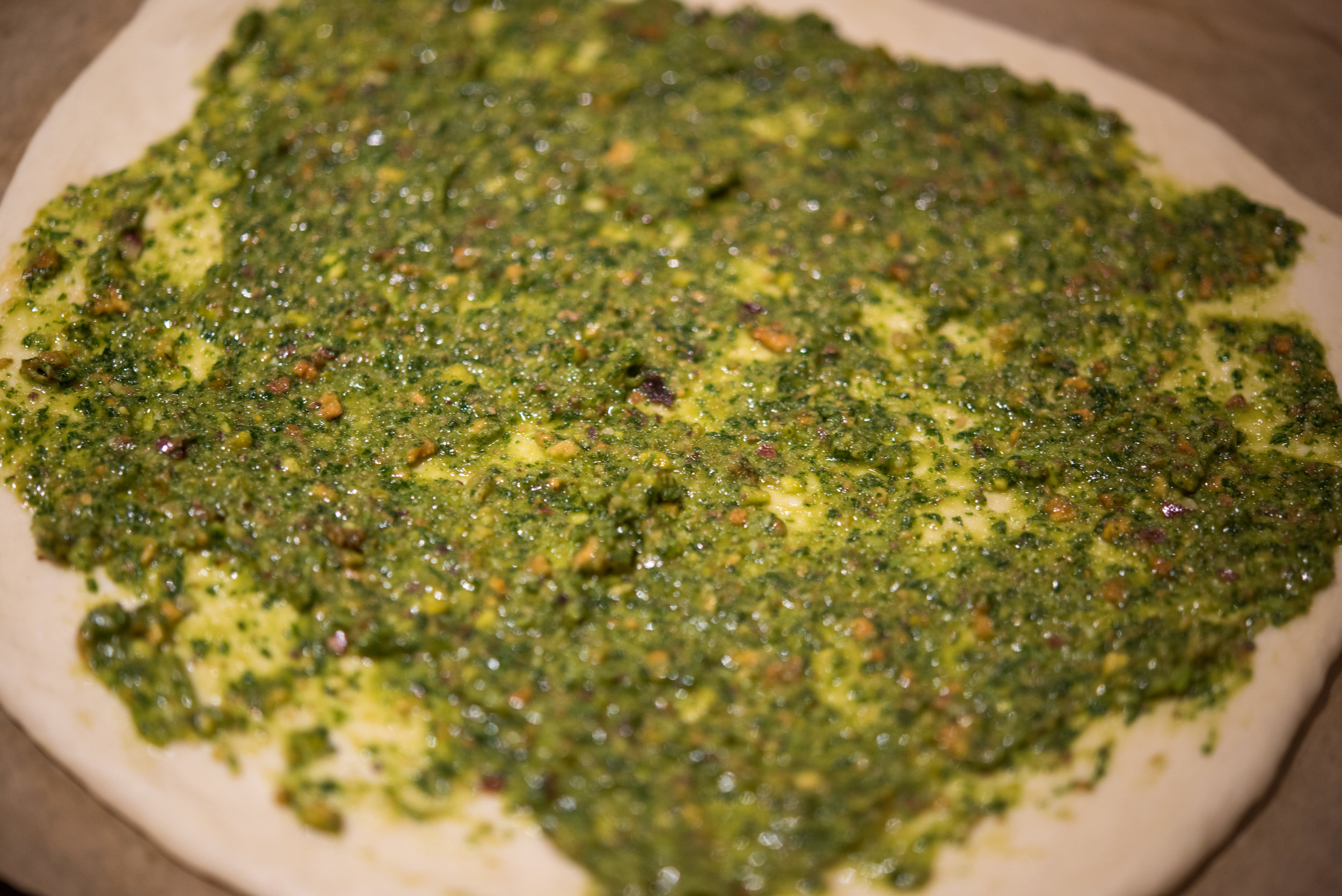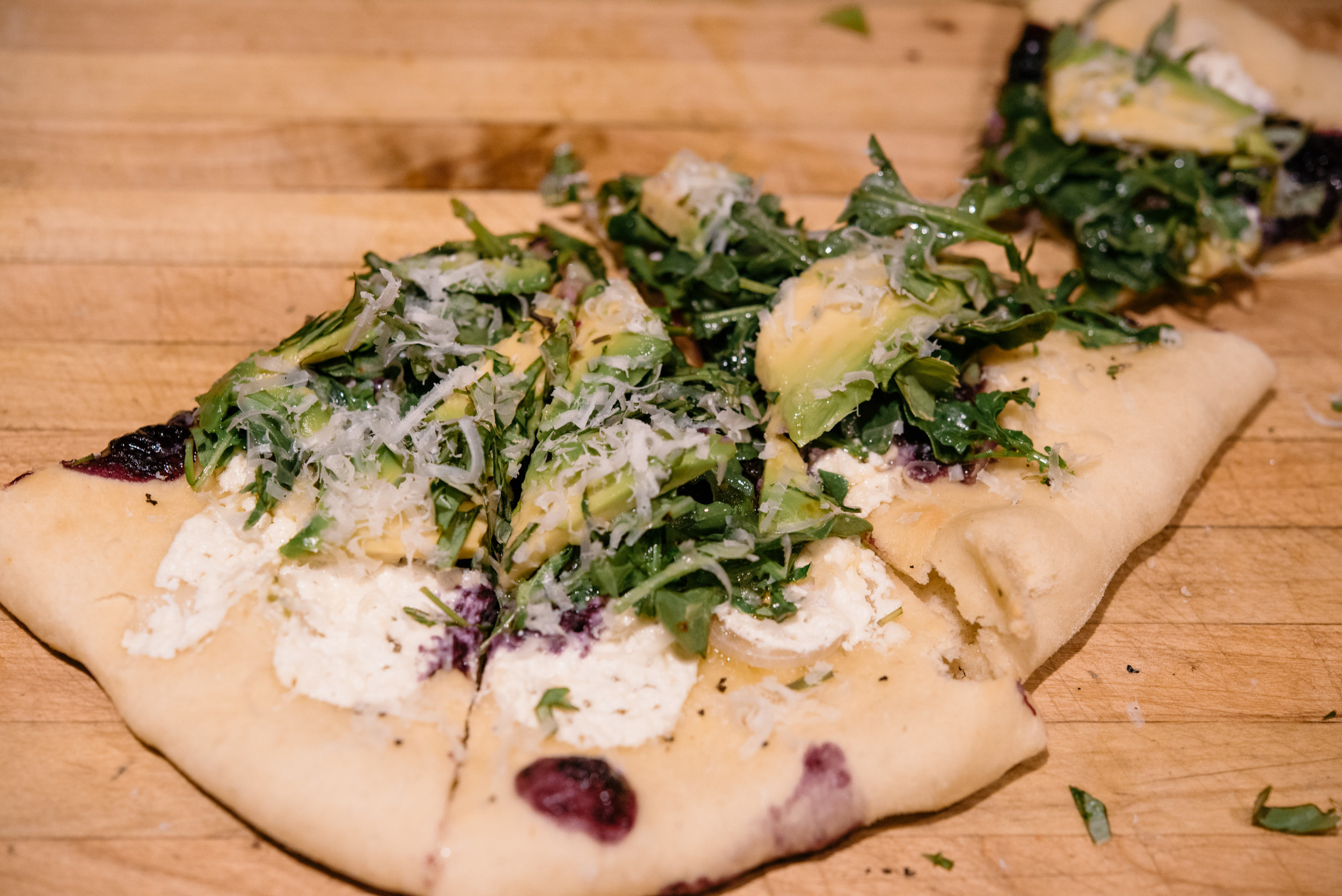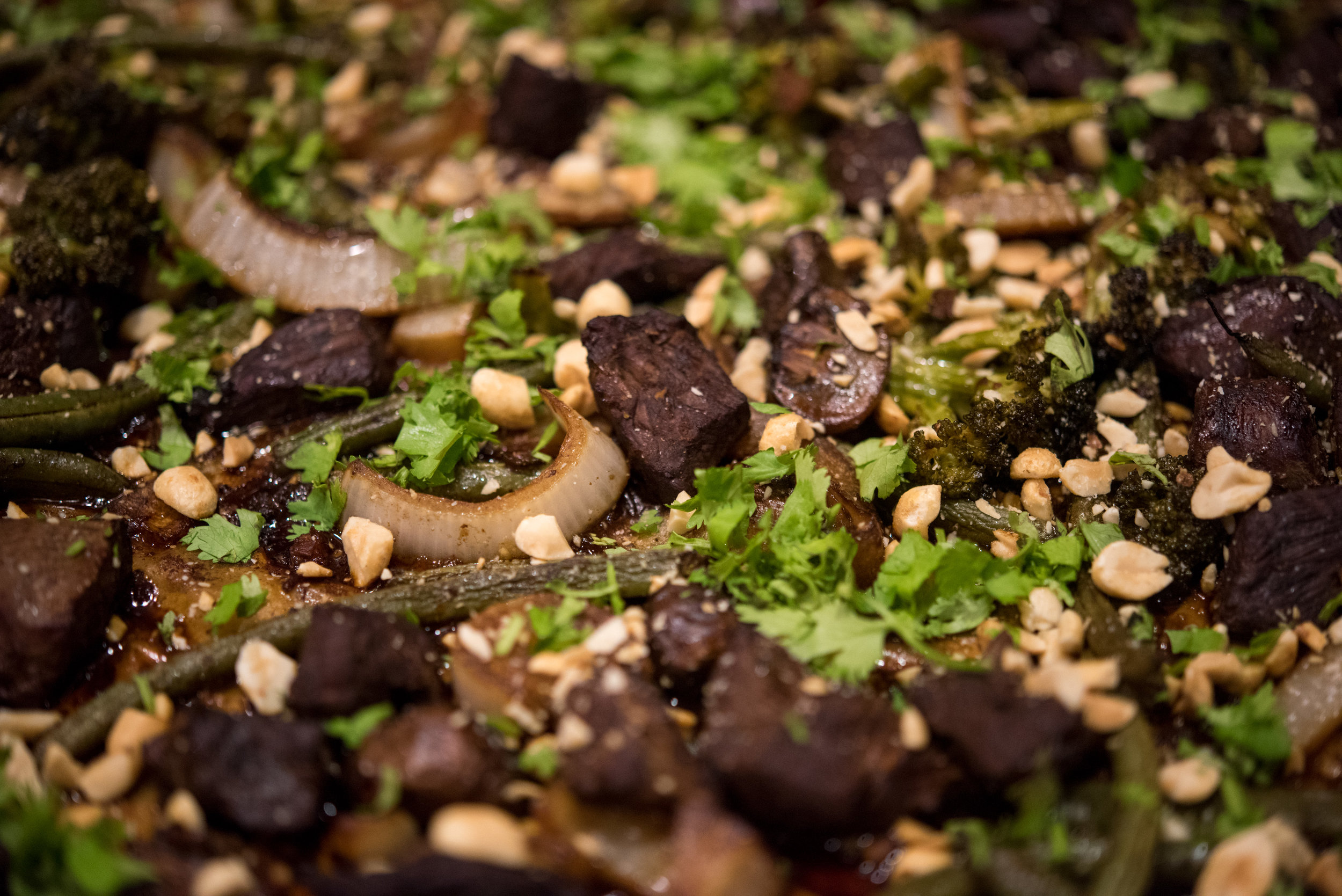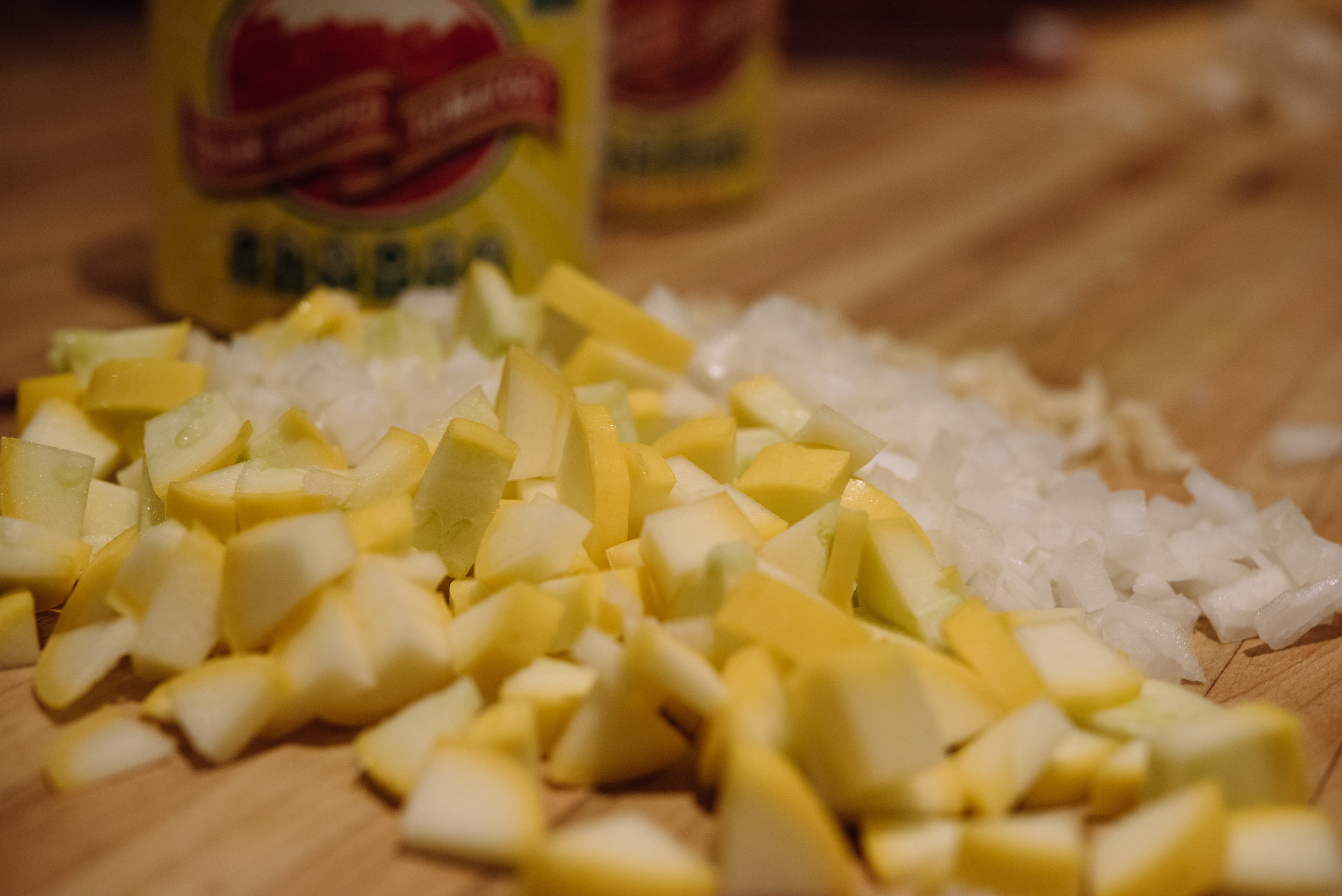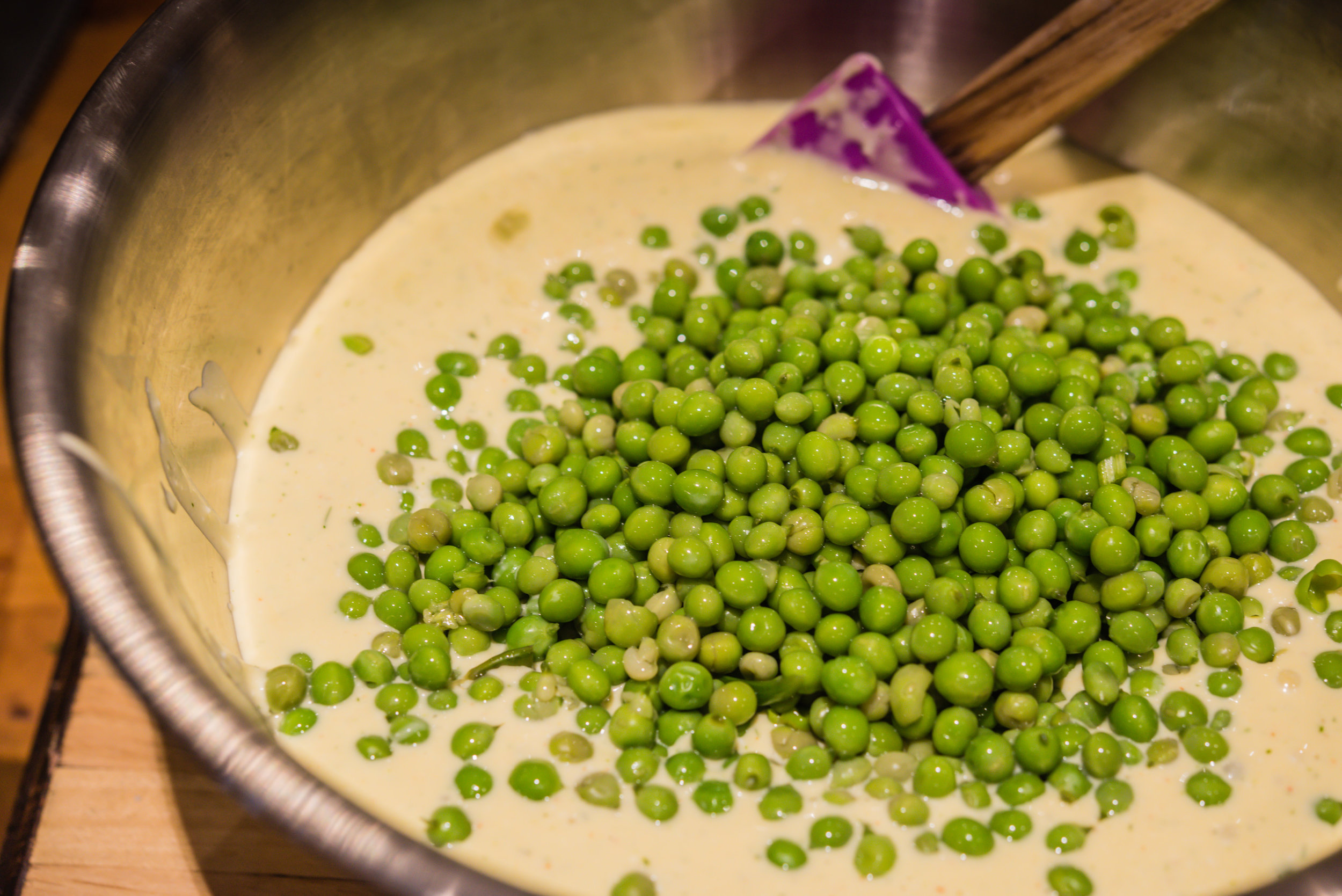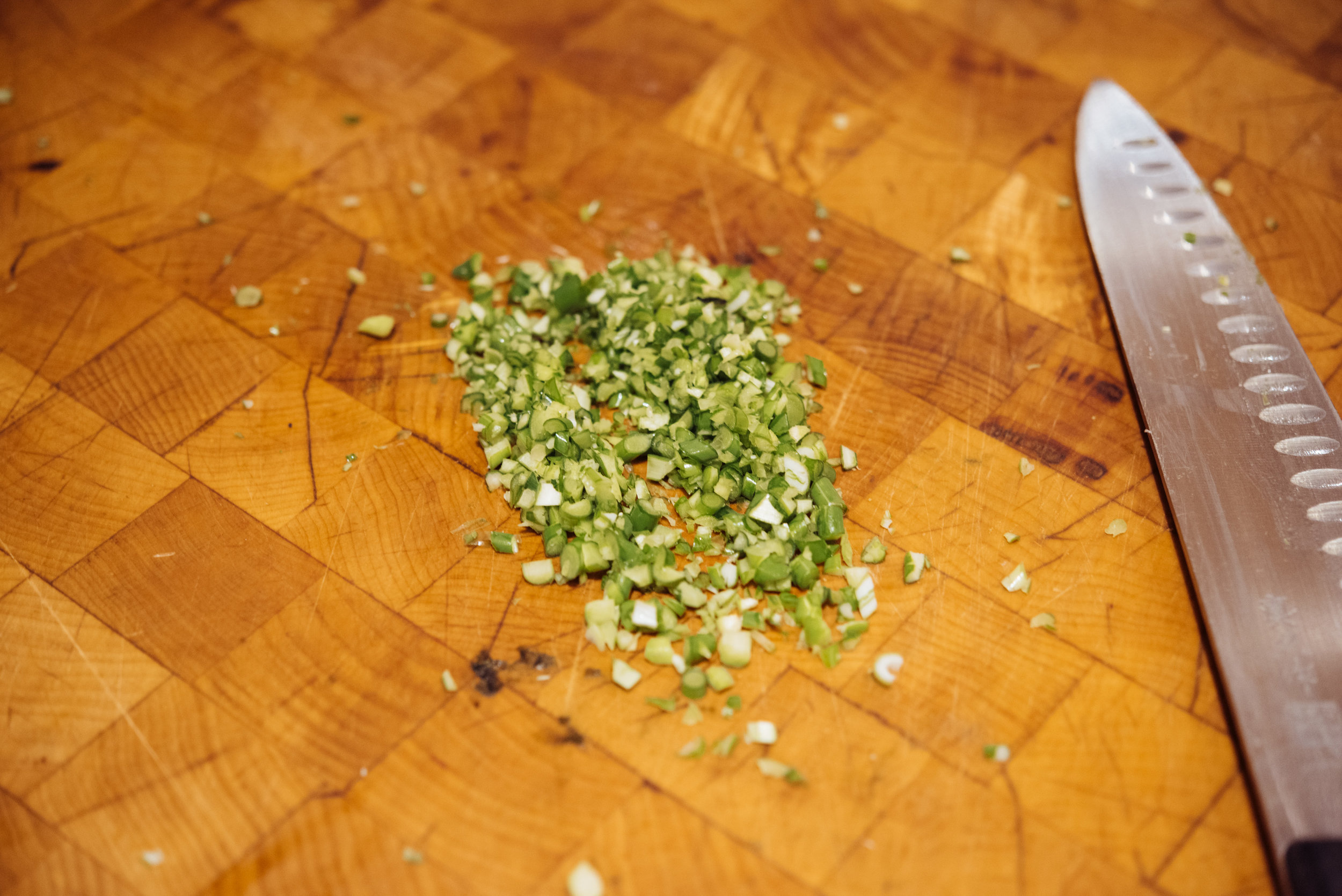Between the subzero temperatures and the couple of feet of snow on the ground, it seems like winter is here to stay for a while. Which is okay because it means I can continue roasting squash and carrots to my heart’s content. Not only do they taste good, it’s nice to have a little color in the kitchen — given that it’s pretty monochromatic outside our kitchen windows. Last week’s Lake Superior CSA box came along at exactly the right time, my squash and carrot stash was nearly gone and we have another 10 inches of snow in the forecast tonight. Time to turn on the oven and get roasting.
I’ve never made a brown butter vinaigrette before and I’m definitely going to do it again and again — it’s really good. The wild rice and pine nuts are a nice compliment to the nuttiness of the brown butter (although I’d be hard pressed to come up with anything that’s not good with brown butter) and the cranberries add just enough sweetness to balance out the tangy vinaigrette. This salad would be perfect to bring to a potluck (it’s best served at room temperature) and it’s really good left-over (I ate it for breakfast this morning with a 6 1/2 minute egg on top). All in all, this salad is a winner — it’s relatively healthy, makes your kitchen smell great, and is sturdy enough to keep for a few days in the fridge. And since my CSA box had a bunch of carrots and squash in it, I can whip up a batch next week!
Wild Rice Salad with Roasted Vegetables and Brown Butter Vinaigrette
1 cup wild rice, rinsed well
3 cups of water
1 yellow onion, sliced
1 delicata squash, halved down the middle and seeds removed
3 or 4 carrots, peeled and cut into 1-inch slices
1/2 cup dried cranberries
6 tablespoons butter
1/4 cup olive oil
1/4 cup pine nuts
3 tablespoons apple cider vinegar
1/2 tablespoon harissa
1/2 tablespoon honey
2 teaspoons Dijon mustard
1 teaspoon maple syrup
1 teaspoon kosher salt, divided
Preparation
Preheat oven to 400 degrees.
Add water, 1/2 teaspoon salt, and wild rice to a medium saucepan. Bring to a boil, reduce to a simmer, and cover with a lid. Simmer until rice is cooked, about 45 minutes. Drain and set aside.
Combine the olive oil, honey, harissa, and 1/2 teaspoon of salt in a large bowl. Place the squash, carrots, and onions into the bowl with olive oil mixture and toss to coat completely. Place on a parchment lined sheet tray and roast for about 30 minutes or until golden brown and softened.
Add the pine nuts to a small skillet and toast over medium heat until they start to turn a light golden brown. Remove immediately and set aside — they burn easily so keep your eyes on them while they are cooking. Add the butter to the skillet you toasted the pine nuts in and melt the butter over medium-high heat. Once the butter begins to brown around the edges, swirl the pan until the butter turns a deep golden brown and it smells nutty — between 3 and 5 minutes. Take off the heat and let cool slightly.
Once the butter has cooled, add the vinegar, maple syrup, and Dijon mustard and whisk to combine. Season to taste with salt and pepper.
Place the rice, pine nuts, cranberries, and roasted vegetables into a bowl and toss with the vinaigrette. Taste for seasoning and serve warm or at room temperature.







